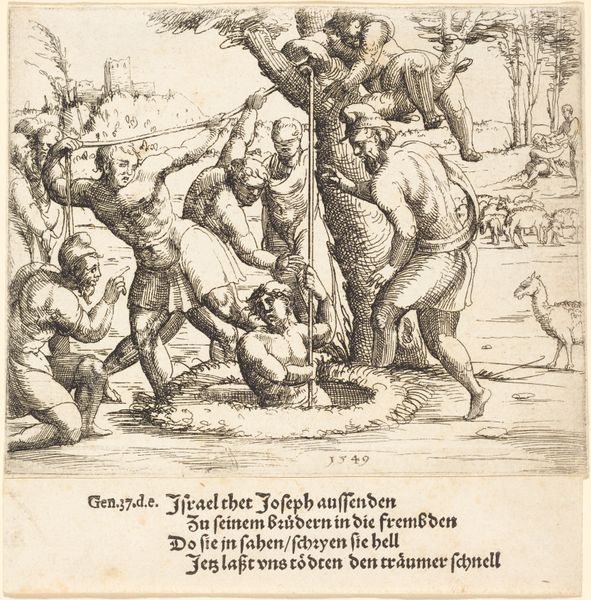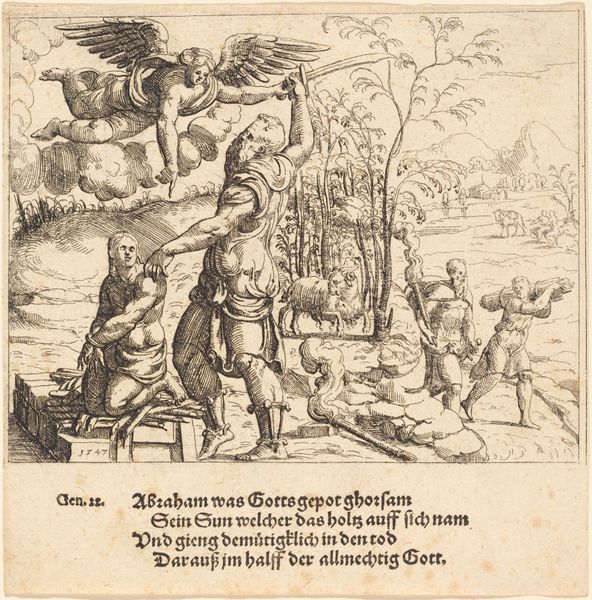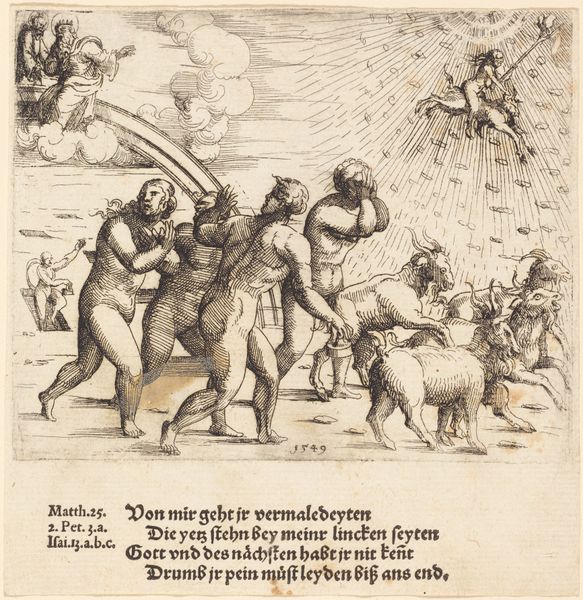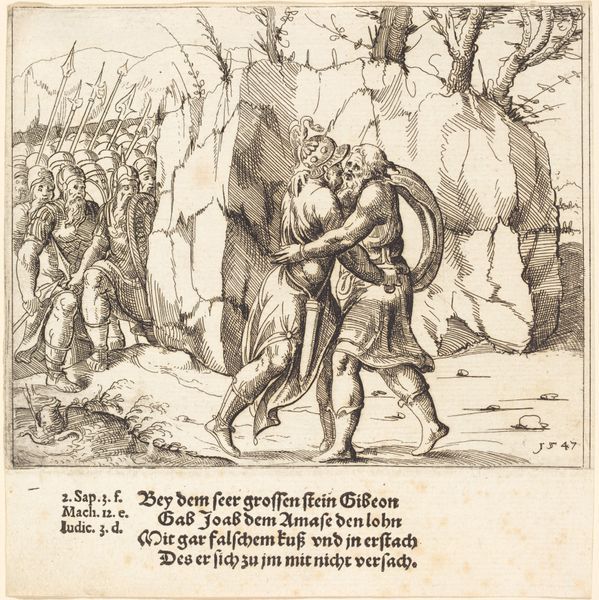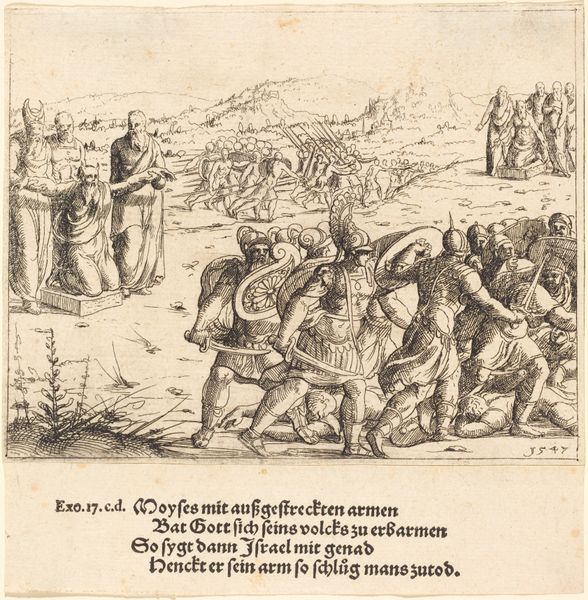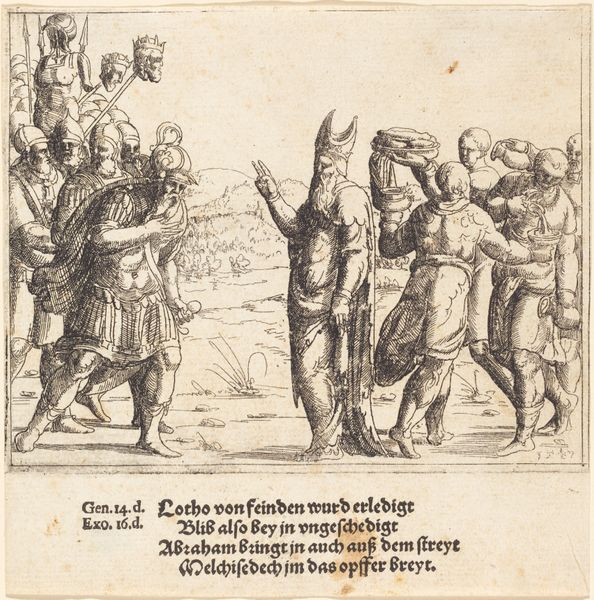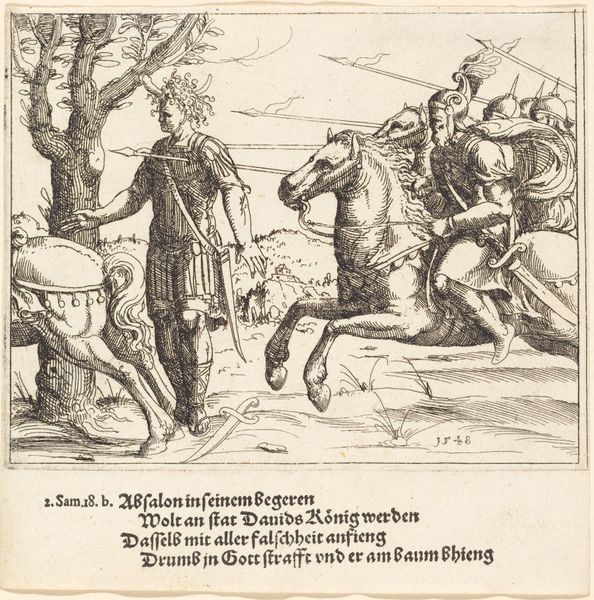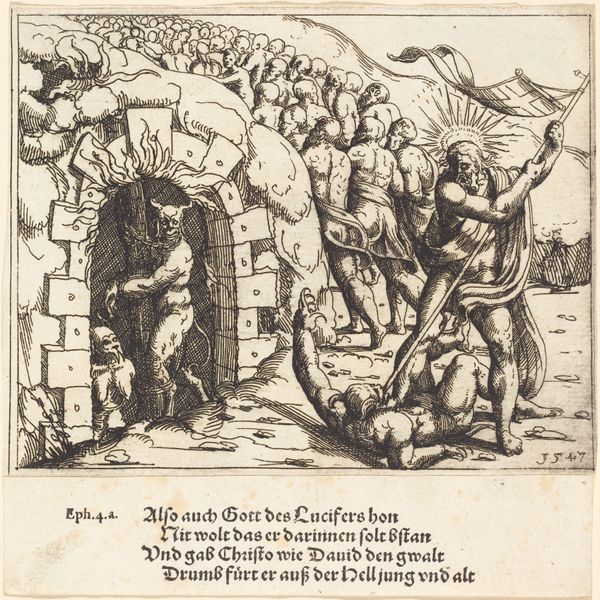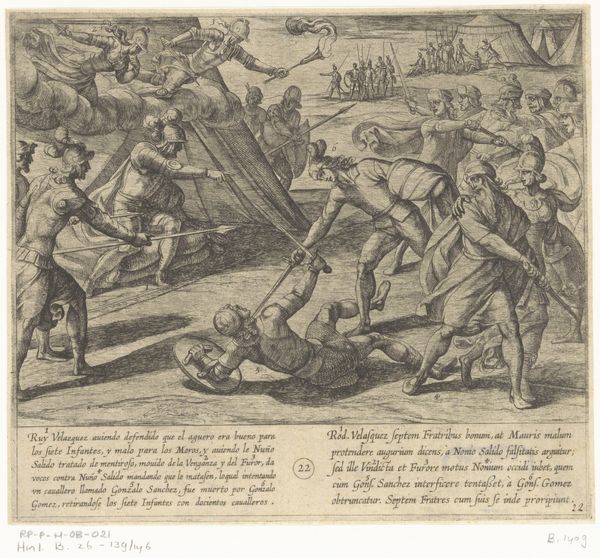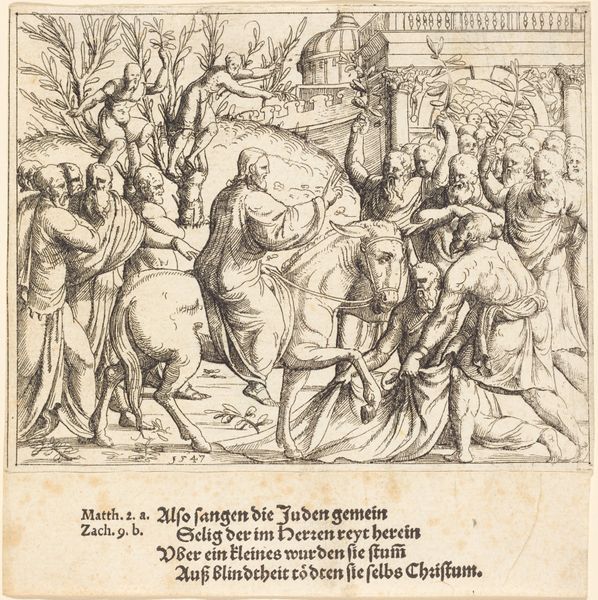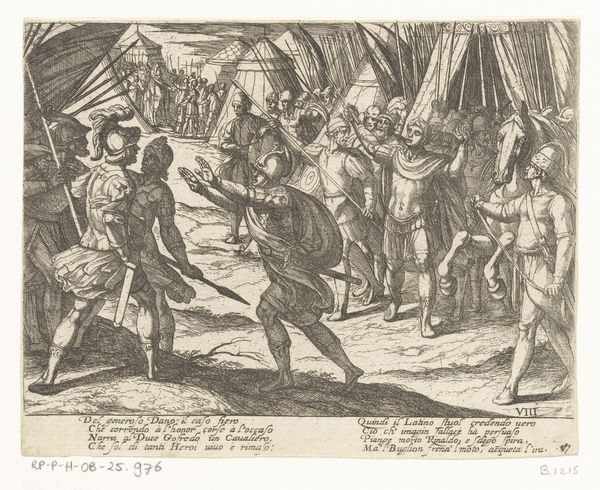
print, etching
#
narrative-art
# print
#
etching
#
landscape
#
figuration
#
history-painting
#
northern-renaissance
Copyright: National Gallery of Art: CC0 1.0
Editor: This etching, "Job Learns of His Misfortunes" by Augustin Hirschvogel, dated 1549, certainly makes an impact. It's hard to ignore the overwhelming sense of suffering it conveys, especially given the scale of loss hinted at in the background. What symbolic layers am I missing? Curator: Consider the cultural memory embedded in this image. Job, in Western tradition, is the ultimate symbol of undeserved suffering. The image seizes the moment loss of material possessions, children, health all gone. The messengers bearing bad news on the left, the burning city in the background, and even the almost fantastical beast on the right become visual motifs of devastation, and what I would consider active psychological and emotional collapse. What resonates most deeply with you about this imagery? Editor: I’m struck by the stark contrast between Job's isolation and the frantic activity around him. The gestures – his, his wife's, the messengers’ – feel like codified expressions of grief, yet strangely theatrical. Curator: Exactly. They reference a visual language understood by Hirschvogel's contemporaries, steeped in biblical narrative and symbolic gesture. Note how his wife gestures, and even Job does as well. Could this represent the helplessness felt in relation to faith? Also, consider that, as a print, this image was intended for wider circulation. The choice of symbols would, therefore, also reflect a shared cultural understanding and memory. Editor: So the universality of the suffering is heightened by accessible symbols. It really brings out the timeless struggle with faith in the face of adversity. Curator: Precisely. Hirschvogel taps into an enduring archetype of human suffering, offering viewers a potent reflection on faith, loss, and resilience throughout time.
Comments
No comments
Be the first to comment and join the conversation on the ultimate creative platform.
